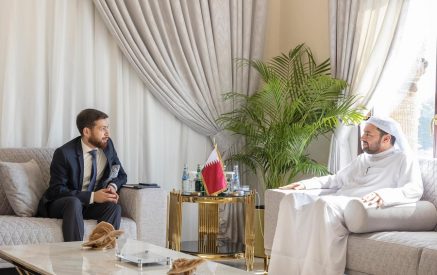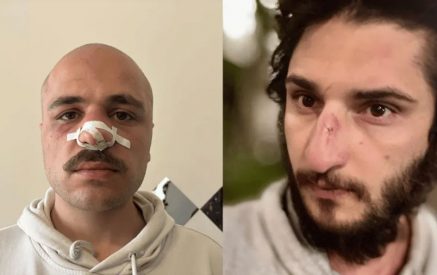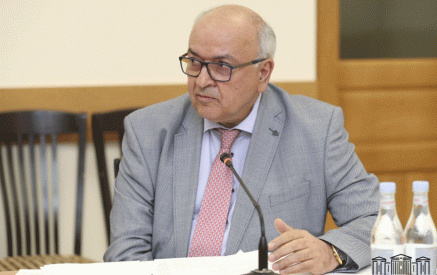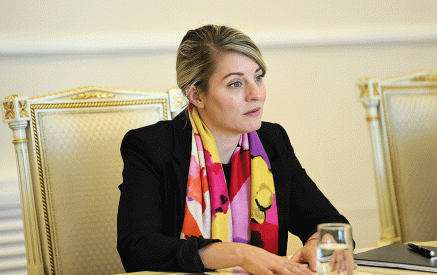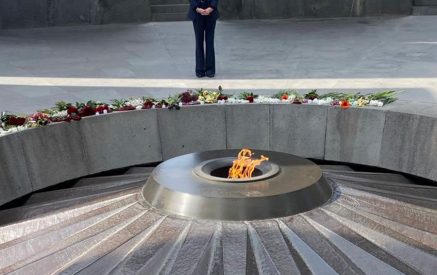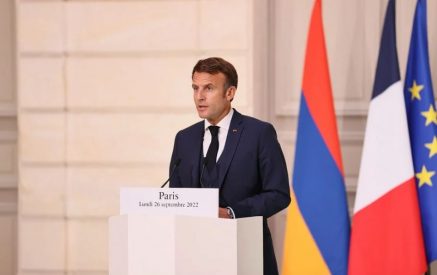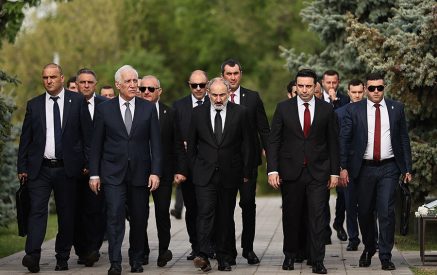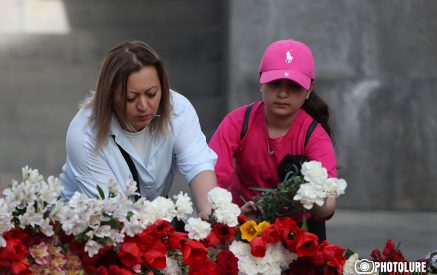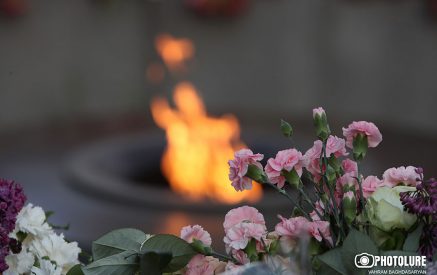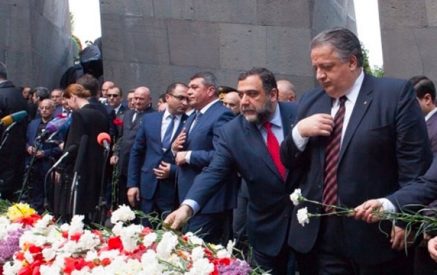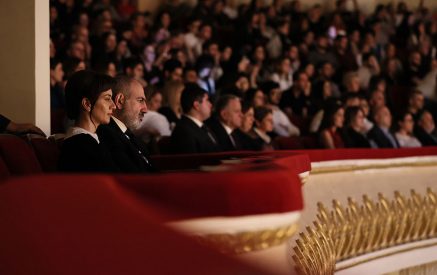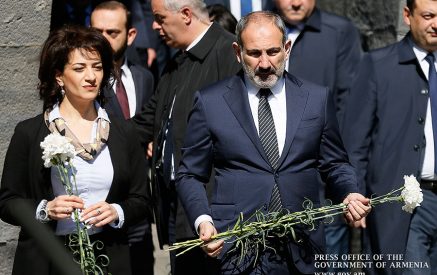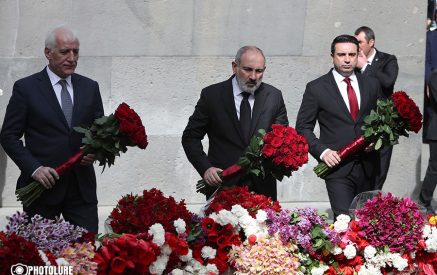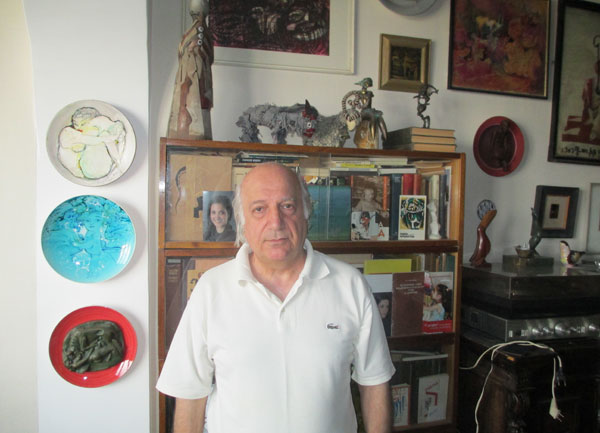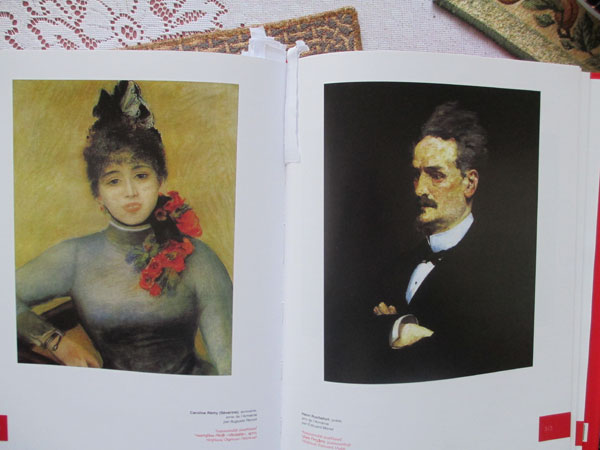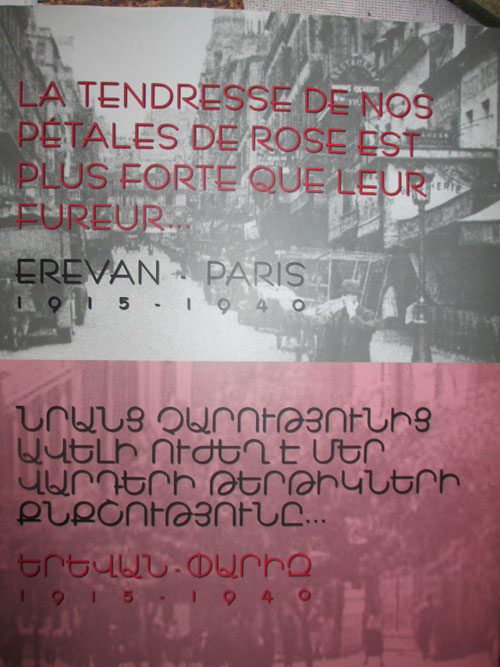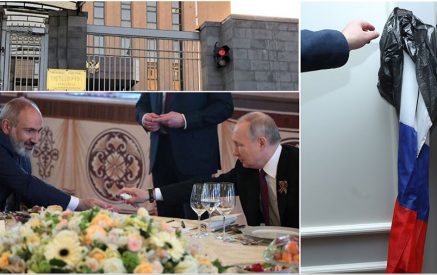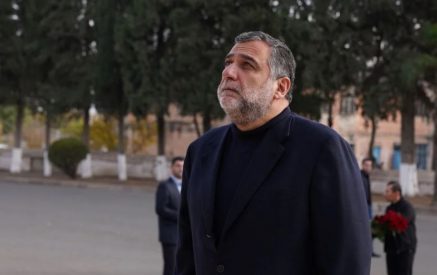Says writer, publicist and art critic Ruben Angaladian
“We see Charents in Paris. Also Isahakyan, Saryan, and Yakulov. We see the opposite – Konstant Zaryan, who moved to Soviet Armenia and then to Paris. We see Edgar Shahin in Armenia who has donated all his works to our gallery,” says Ruben Angaladian presenting his a few days ago published documentary-album entitled “The tenderness of our rose petals is stronger than their rage. Yerevan-Paris”. It covers the years of 1915-1940. It took one year from the author to present the bilingual, French and Armenian, studies to the reader’s criticism.
According to the study of the project and the author of the collection, writer, publicist and art critic Ruben Angaladian, the year 1915 symbolized Genocide and ended by the year 1940, as the German troops invaded France. “In this period, the capital of France was the capital of global culture, and realizing and visualizing how many Armenian intellectuals have lived and worked in Paris, I decided to present. No one has addressed this issue from this perspective.” In his opinion, this is a “unique project” because it changes our mindset and the assessment about the national culture. “We do not say just in words that have global figures. I’m not talking about separate figures. I’m talking about this path as a whole. The Armenian artistic and imaginative mind has worked in Paris since the beginning of the century until the year of 1940. We view it as a systematic way of thinking. Hereby, we are close to the European culture as they too have a systematic way of thinking. We show that we too easily accept the new, the beauty, the highest, and here, we open new ways,” says R. Angaladian.
Who are involved in the research-album, what role they have played as in pre-war France, so as in the history of the Armenian culture. R. Angaladian notes that he has expanded the list. Arthur Adamov, Henri Troyat, Berberova. I would like to inform that the number of pictures is only 400, parallel, there are also archival documents and manuscripts. “There are a number of names here that are not admitted to be perceived as representatives of the Armenian cultural. Although, our same culture easily accepted Saroyan and Aznavour who in fact did not write Armenian. Arthur Adamov is one of the fathers of the Theatre of the Absurd in the world. There were three of them in the theater, all three of them created in Paris, none of the three was a French: one of them was Irish, the other – Romanian and Adamov was an Armenian. There were two major theaters operating in those years in Paris. They were works brought from Moscow: Baliev’s Theater and Georges Pitoëff, which is still operating in Switzerland,” says R. Angaladian in the interview with us.
There is a big section in the book dedicated to the Armenian artists. According to R. Angaladian, they were appreciated by the Government of France, almost all of them were awarded the “Legion of Honor” medal. “Makhokhyan, Shabanyan, Gyurjyan, who were not less competitive with their creative talent, moreover, have made great achievements in France.” Talking about Makhokhyan, the author tells about him that apart from being a famous artist, he was perceived as a virtuoso violinist. Back in 1926, the Armenian artists got together and created quite a big union headed by Edgar Chahine. The latter, at the beginning of the century, was one of renowned graphic artists in Paris. The second Union called “The Armenian Union of Free Writers”, with its Charter, was established in 1931, the President was Rafael Shishmanyan who has brought a full archive to Armenia. In the opinion of the author, one of the tasks set before him was solved, to make it understand that the creative Armenian mass thrown out after or during the genocide has found an atmosphere in France and have created. “The Armenian culture is a European culture.”
As an example, I will like to bring Komitas. Komitas, according to our interlocutor, unless being taught at the Berlin Conservatory, he had no idea how to cleanse the Armenian folk song from the foreign forms and aesthetics. R. Angaladian believes that today the following question is more actual today. “The European culture did not become the multi-culture of the nations who have moved to Europe in the last 30-40 years, it did not become a culture close to their heart. On the contrary. We see the clash of two cultures. In particular, culture of the Muslim fundamentalist ideology or the peoples of African countries.” R. Angaladian says that an attempt was made to show that a nation that was found in the most difficult times, when it was a genocide, penetrated into the French artistic life and became one of the key role-players. And what will the book give to Europe, particularly to France? R. Angaladian says that the time has come for the European to pay attention to the archives, mainly because a documentary from the Armenian archives is presented. There are 150 archival documents in the album.
To the point, the contacts with foreigners were not left aside. There are people in the book who were the first to raise the Armenian question in Europe, especially in France. We are talking about Henri Rochefort’s and Severin’s Carolina Remy. They have negotiated with the eminent people of France: Romain Rolland, Anatole France, and Bourdelle. He has not forgotten about Misak Manushian with his three published journals. The book was translated into French by Vardan Fereshetyan and Aida Charkhchyan, photos by Zaven Khachikyan, design – Arthur Mkrtchyan.
Ruzan MINASYAN,
“Aravot” daily

